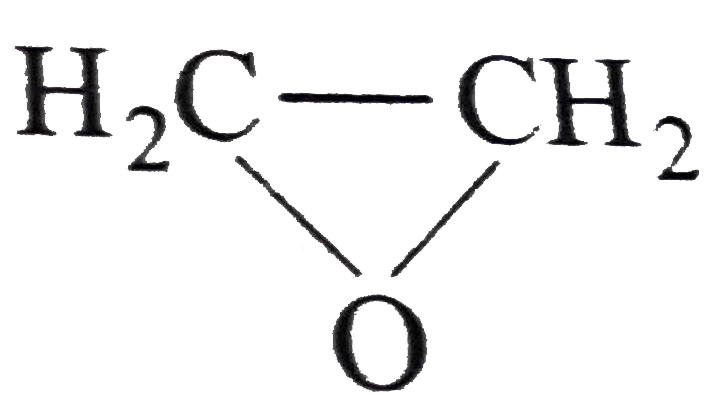The oxygenation activity of RuBisco enzyme in photorespiration leads to the formation of:
2 molecules of 3-C compound
1 molecule of 3-C compound
1 molecules of 6-C compound
1 molecule of 4-C compound and 1 molecule of 2-C compound
To solve the question regarding the oxygenation activity of the RuBisCO enzyme in photorespiration, we need to understand the process of photorespiration and the role of RuBisCO.
1. Understanding Photorespiration:
- Photorespiration is a process that occurs in plants, primarily when the concentration of oxygen is high and carbon dioxide is low. It is a wasteful pathway that can occur when RuBisCO, the enzyme responsible for fixing carbon dioxide during photosynthesis, reacts with oxygen instead of carbon dioxide.
2. Role of RuBisCO:
- RuBisCO can catalyze two reactions: the carboxylation of ribulose bisphosphate (RuBP) with carbon dioxide (leading to the formation of 3-phosphoglycerate) and the oxygenation of RuBP with oxygen (leading to the formation of 2-phosphoglycolate).
3. Products of Oxygenation:
- When RuBisCO catalyzes the reaction with oxygen, it leads to the formation of a 2-carbon compound (2-phosphoglycolate) and a 3-carbon compound (3-phosphoglycerate). The 2-phosphoglycolate is then processed through a series of reactions that ultimately result in the release of carbon dioxide.
4. Analyzing the Options:
- Option 1: 2 molecules of 3-carbon compounds - This is incorrect as the oxygenation reaction does not produce two 3-carbon compounds.
- Option 2: 1 molecule of 3-carbon compound - This is partially correct but does not account for the 2-carbon compound produced.
- Option 3: 1 molecule of 6-carbon compound - This is incorrect as no 6-carbon compound is formed in this process.
- Option 4: 1 molecule of the 4-carbon compound and 1 molecule of 2-carbon compound - This is also incorrect as the main products are a 2-carbon compound and a 3-carbon compound.
5. Conclusion:
- The correct answer to the question is that the oxygenation activity of RuBisCO in photorespiration leads to the formation of a 2-carbon compound (2-phosphoglycolate) and a 3-carbon compound (3-phosphoglycerate). However, since the options provided do not match this exactly, we conclude that the closest correct interpretation is that the oxygenation activity leads to the formation of a 3-carbon compound and a 2-carbon compound.
Final Answer:
The oxygenation activity of RuBisCO enzyme in photorespiration leads to the formation of a 2-carbon compound and a 3-carbon compound.
- Photorespiration is a process that occurs in plants, primarily when the concentration of oxygen is high and carbon dioxide is low. It is a wasteful pathway that can occur when RuBisCO, the enzyme responsible for fixing carbon dioxide during photosynthesis, reacts with oxygen instead of carbon dioxide.
- RuBisCO can catalyze two reactions: the carboxylation of ribulose bisphosphate (RuBP) with carbon dioxide (leading to the formation of 3-phosphoglycerate) and the oxygenation of RuBP with oxygen (leading to the formation of 2-phosphoglycolate).
- When RuBisCO catalyzes the reaction with oxygen, it leads to the formation of a 2-carbon compound (2-phosphoglycolate) and a 3-carbon compound (3-phosphoglycerate). The 2-phosphoglycolate is then processed through a series of reactions that ultimately result in the release of carbon dioxide.
- Option 1: 2 molecules of 3-carbon compounds - This is incorrect as the oxygenation reaction does not produce two 3-carbon compounds.
- Option 2: 1 molecule of 3-carbon compound - This is partially correct but does not account for the 2-carbon compound produced.
- Option 3: 1 molecule of 6-carbon compound - This is incorrect as no 6-carbon compound is formed in this process.
- Option 4: 1 molecule of the 4-carbon compound and 1 molecule of 2-carbon compound - This is also incorrect as the main products are a 2-carbon compound and a 3-carbon compound.
- The correct answer to the question is that the oxygenation activity of RuBisCO in photorespiration leads to the formation of a 2-carbon compound (2-phosphoglycolate) and a 3-carbon compound (3-phosphoglycerate). However, since the options provided do not match this exactly, we conclude that the closest correct interpretation is that the oxygenation activity leads to the formation of a 3-carbon compound and a 2-carbon compound.
The oxygenation activity of RuBisCO enzyme in photorespiration leads to the formation of a 2-carbon compound and a 3-carbon compound.
Topper's Solved these Questions
Similar Questions
Knowledge Check
The oxygenation activity of RuBisco enzyme in photorespiration leads to the formation of:
A1 molecule of 3-C compoundB1 molecule of 6-C compoundC1 molecule of 4-C compound and 1 molecule of 2-C compoundD2-molecules of 3-C compoundPhotorespiration shows formation of
ASugar but not ATPBATP but not sugarCBoth ATP and sugarDNeither ATP nor sugarPolymerization of acetylene leads to the formation of:
ABenzeneBButaneCNaphthaleneDOctane
Combination of two AO's lead to the formation of
View SolutionRuBisCO is enzyme for
View SolutionThe reaction of
 with RMgX, leads to the formation of :
with RMgX, leads to the formation of :
View SolutionDestructive distillation of coal leads to the formation of
View SolutionDestructive distillation of coal leads to the formation of
View Solution

